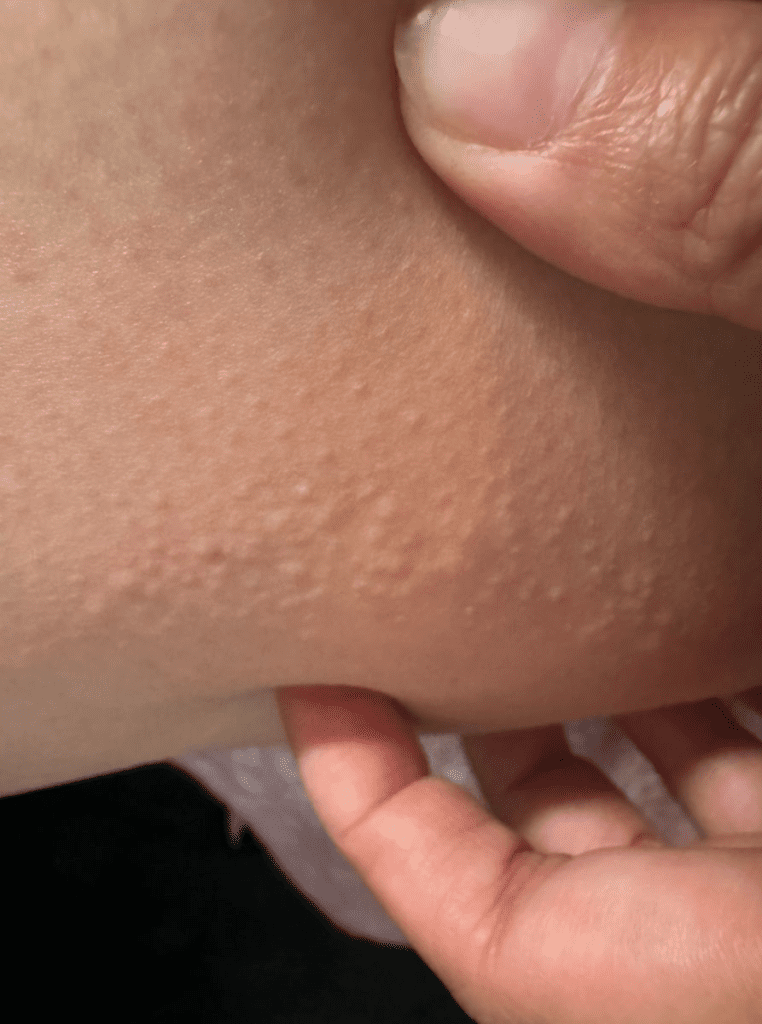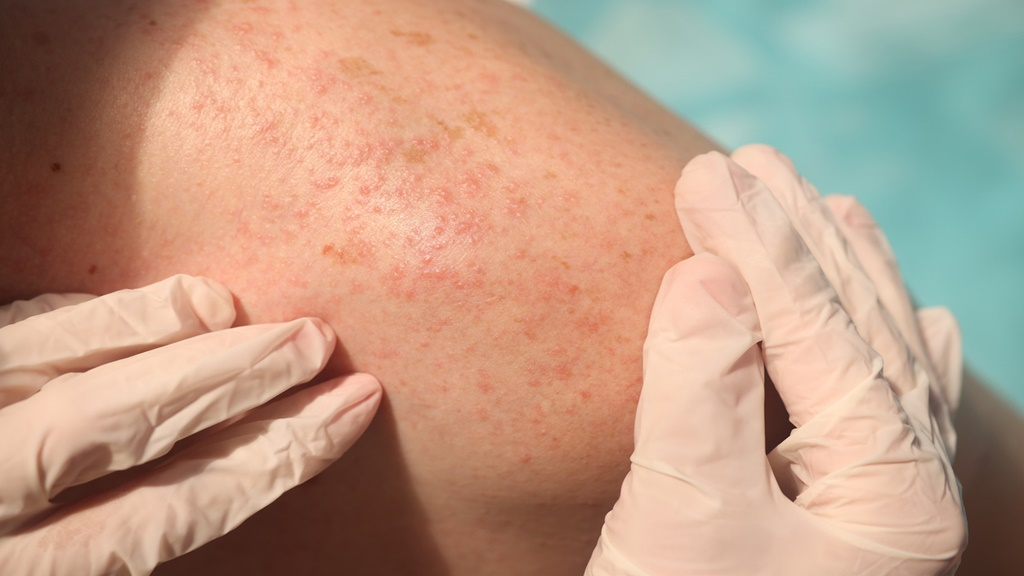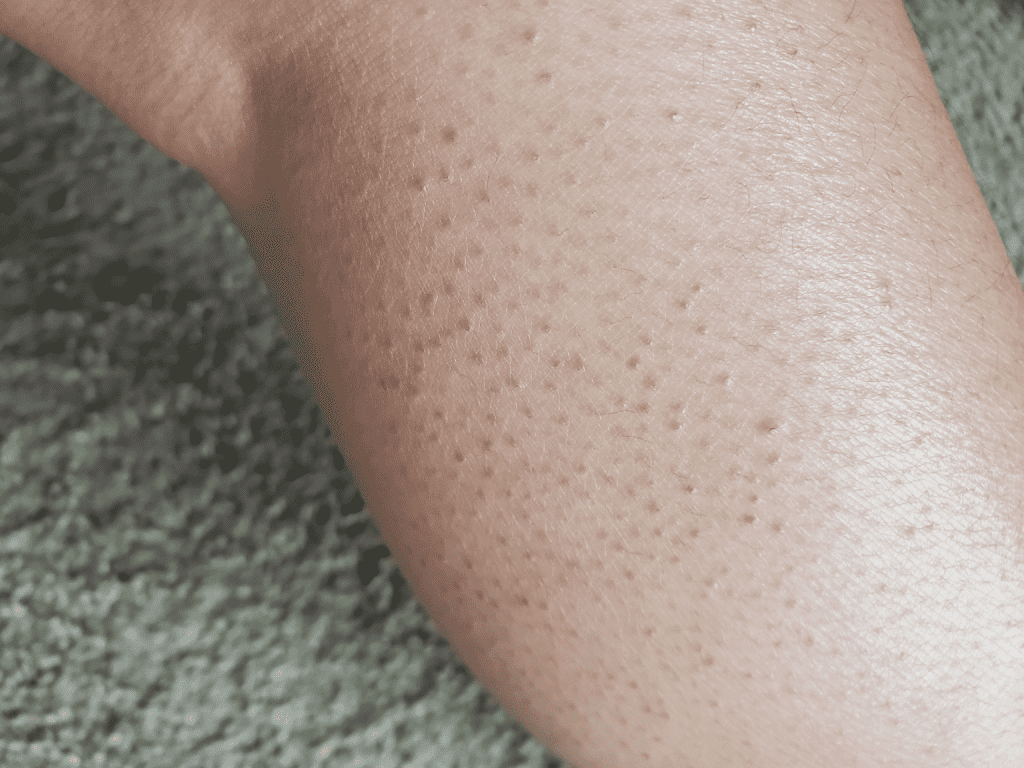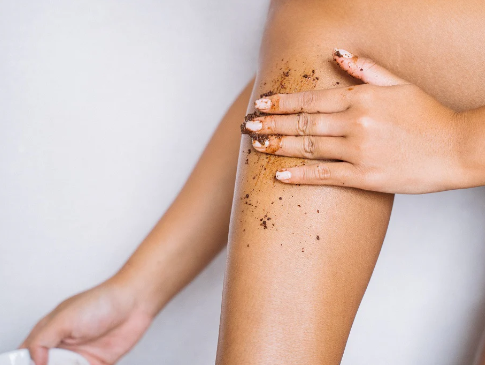Noticing small, raised bumps on your legs can be concerning, especially if you’re unsure what’s causing them. These bumps can range from minor irritations to signs of underlying skin conditions. While they might be harmless in many cases, understanding their cause can help you choose the right treatment and avoid complications. Let’s explore some common causes of these bumps and effective ways to treat them.

Common Causes of Tiny Raised Bumps on Legs
These bumps could result from various skin conditions, each with unique characteristics. Here are some of the most common reasons you might be experiencing these tiny raised bumps:
1. Keratosis Pilaris: The “Chicken Skin” Condition
Keratosis pilaris is a widespread skin condition that leads to small, rough bumps, often referred to as “chicken skin.” These bumps form when keratin, a protein found in the skin, clogs hair follicles. While this condition is harmless, it can be bothersome due to its appearance and rough texture.
Keratosis pilaris often appears on the thighs, upper arms, and buttocks, and it tends to be more common in those with dry skin. It’s typically not painful, but it may feel rough to the touch.
2. Folliculitis: Inflamed Hair Follicles
Folliculitis occurs when hair follicles become infected or inflamed, resulting in red, swollen bumps that can sometimes be painful or itchy. This condition is usually caused by bacteria, fungi, or irritation from shaving, waxing, or wearing tight clothing.
Folliculitis can appear as small, red pimples surrounding hair follicles. In some cases, these bumps may fill with pus, indicating a more serious infection that may need medical attention.
3. Insect Bites: Reactions to Pesky Pests
Tiny raised bumps on the legs are often a result of insect bites, such as those from mosquitoes, fleas, or bedbugs. These bites usually appear as small, itchy welts or clusters of red bumps and can sometimes be swollen or painful.
Insect bites are typically accompanied by itching or a burning sensation. Depending on the insect, the bites may disappear within a few days, or they might linger if you have an allergic reaction to the insect’s saliva.
4. Allergic Reactions: Irritation from Products or Fabrics
Allergic reactions to skincare products, detergents, or certain fabrics can also cause tiny bumps on the skin. These bumps may be red, itchy, or accompanied by a rash. Common triggers include fragrances, dyes, and chemicals in soaps, lotions, and laundry products.
If you suspect an allergic reaction, consider what you recently applied to your skin or what type of fabric you wore. Identifying and avoiding the irritant can help reduce symptoms and prevent further breakouts.
5. Heat Rash: Small Bumps Due to Overheating
Heat rash, or “prickly heat,” is a condition where blocked sweat ducts cause tiny raised bumps. It usually occurs in hot, humid weather when sweat becomes trapped under the skin, leading to inflammation and irritation.

The bumps from heat rash can appear red and itchy, and they often affect areas where sweat accumulates, such as the thighs and behind the knees. Staying cool and dry can help manage this condition and reduce discomfort.
What You Should Do About Tiny Raised Bumps on Your Legs

While some bumps are minor and can be treated with at-home remedies, others may require professional evaluation. Here’s what you can do to address them:
1. Consult a Dermatologist for a Professional Diagnosis
If you’re uncertain about the cause of your bumps or if they persist, it’s best to consult a dermatologist. A dermatologist can provide a proper diagnosis and recommend treatments tailored to your condition. Some conditions may require prescription medications or specific topical treatments that only a professional can provide.
2. Maintain Good Hygiene to Prevent Further Irritation
Regularly washing your legs with warm water and a gentle soap can help keep your skin clean and prevent further irritation. Good hygiene is particularly important if your bumps are due to folliculitis or a bacterial infection. Just be sure not to over-wash, as this can strip your skin of essential oils and exacerbate dryness.
3. Use Hypoallergenic and Non-Comedogenic Products
For those with sensitive skin or allergies, choosing hypoallergenic and non-comedogenic products can help reduce irritation and prevent further breakouts. Opt for fragrance-free and dye-free products when possible, as these tend to be less irritating on the skin.
4. Exfoliate Gently to Unclog Pores

Exfoliating can help remove dead skin cells and unclog pores, reducing the appearance of bumps from conditions like keratosis pilaris. Use a gentle exfoliant once or twice a week, and avoid scrubbing too harshly. Chemical exfoliants containing ingredients like lactic acid or salicylic acid can also be effective for treating rough, bumpy skin.
5. Moisturize Regularly to Keep Your Skin Hydrated
Moisturizing is essential for keeping your skin smooth and hydrated, particularly if you have dry skin conditions like keratosis pilaris. Choose a rich, hydrating moisturizer, preferably one that contains ingredients like urea, glycerin, or ceramides, to lock in moisture and improve the texture of your skin.
Additional Tips for Managing Tiny Raised Bumps
In addition to the basic treatments, you can take some extra steps to care for your skin and prevent future flare-ups:
- Avoid Tight Clothing: Wearing loose, breathable clothing can help reduce friction and irritation, especially if your bumps are due to folliculitis or heat rash.
- Stay Hydrated: Drinking enough water supports overall skin health and helps keep your skin hydrated, reducing dryness and irritation.
- Limit Shaving or Waxing: Shaving and waxing can irritate the skin and cause bumps to worsen. If you need to remove hair, try to use a sharp, clean razor, and consider shaving in the direction of hair growth to minimize irritation.
- Apply Cool Compresses: For itchy or irritated bumps, a cool compress can provide soothing relief and reduce inflammation, particularly in cases of heat rash or insect bites.
Conclusion: Take Charge of Your Skin Health
Tiny raised bumps on your legs are often harmless, but they can be a nuisance. Understanding the possible causes—from keratosis pilaris to allergic reactions—can help you take the right steps to manage them effectively. Whether it’s through maintaining good hygiene, using appropriate skincare products, or consulting a dermatologist, taking proactive steps can help alleviate discomfort and keep your skin looking and feeling its best.
So, if you notice small bumps appearing on your legs, don’t panic. Start by evaluating possible causes and treatments, and take charge of your skin health with confidence. After all, your skin deserves a little extra care and attention to keep it happy and healthy.


